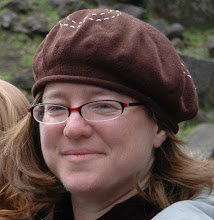 Scharlooweg 55, also known as "Beau Senior," is one of the few houses to exist both in Curacao and in miniature form in the Netherlands in a small town called "Madurodam." Built in 1875 for the Senior family (one of the major Jewish families in Curacao), the home was sold in 1915 to Joshua and Rebecca Levy Maduro family, members of another major Sephardic family on the island. It was the boyhood home of their only son, George John Lionel Maduro (1916-1945), who fought for the Dutch resistance in WWII, and died in Dachau concentration camp of typhus. After his death, his parents commemorated him by building the miniature city Madurodam in in Scheveningen, The Hague, in the Netherlands. A small version of his childhood home resides in the town.
Scharlooweg 55, also known as "Beau Senior," is one of the few houses to exist both in Curacao and in miniature form in the Netherlands in a small town called "Madurodam." Built in 1875 for the Senior family (one of the major Jewish families in Curacao), the home was sold in 1915 to Joshua and Rebecca Levy Maduro family, members of another major Sephardic family on the island. It was the boyhood home of their only son, George John Lionel Maduro (1916-1945), who fought for the Dutch resistance in WWII, and died in Dachau concentration camp of typhus. After his death, his parents commemorated him by building the miniature city Madurodam in in Scheveningen, The Hague, in the Netherlands. A small version of his childhood home resides in the town.
These houses tended to be neo-classical in design with a U-shaped plan surrounding an enclosed patio. This architectural style was both influenced by Latin American architecture and the discovery and excavation of Pompeii. As in Pompeii, the true grandeur of the house was only accessible to those allowed inside. The front of the house often belied the large house that lay behind it (see plan below). Even so, the front facade was an important way of showing social prestige: the monumental pediment above the doorway, the front columns, and the elegant grey and white tiles leading to the entryway all displayed luxury and good taste.

Simplified Floorplan of 55 Scharlooweg based on Winkel, Scharloo p. 295

Bedroom furniture owned by the Maduros of Scharloo now in landhouse Rooi Catochi. (S.A.L. Mongui Maduro Foundation)
In the dining room was often a fontein, a small basin and water container for hand washing. Cupboards made of mahogany housed dishes and glasses. You can read more about Scharloo architecture and "Beau Senior" in P. Pruneti Winkel's Scharloo.
Fontein owned by Shon Serafina Maduro-Jesurun, now in landhouse Rooi Catochi. (S.A.L. Mongui Maduro Foundation)





0 comments:
Post a Comment